Key Points and Summary – The U.S. Navy’s aircraft carrier fleet is facing a severe readiness crisis due to systemic, multi-year delays in both maintenance and new construction. Midlife overhauls that should take a few years are now stretching to five or six, as seen in USS John C. Stennis.
-At the same time, the delivery of new Ford-class carriers is also years behind schedule.
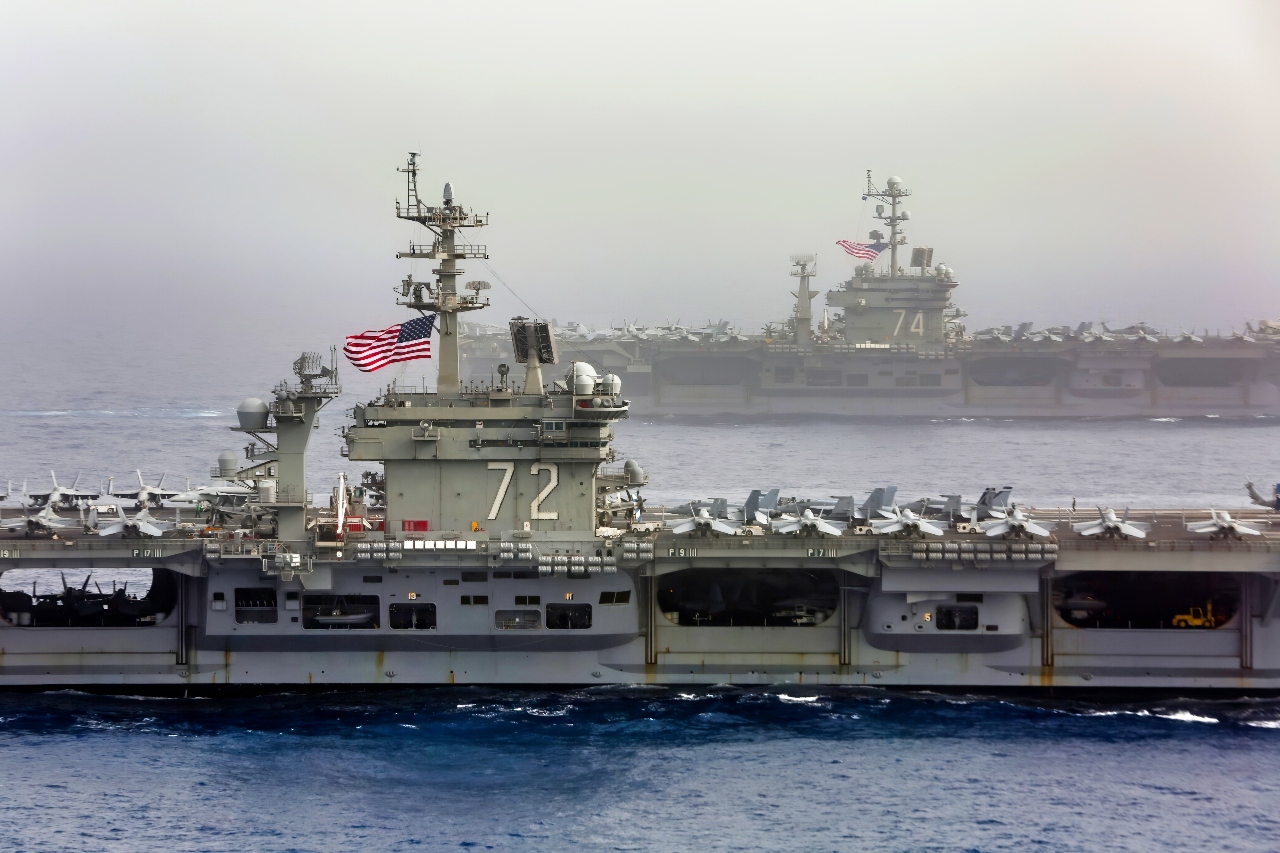
(April 24, 2019)
The Abraham Lincoln and John C. Stennis carrier strike groups conduct carrier strike force operations in the U.S. 6th Fleet. Together, the strike groups will complete high-end warfighting training, enhancing interoperability with key allies and partners in the European theater. (U.S. Navy video by Mass Communication Specialist 1st Class Brian M. Wilbur/Released)
-This “knock-on effect” creates a vicious cycle, stretching the active fleet thin, threatening force posture, and undermining America’s ability to project power at a time of rising threats.
America’s Carriers Are Taking Too Long To Fix
Aircraft carriers have long been symbols of sea power, enabling the United States to project its dominance across the oceans.
However, several trends threaten to undermine that old promise and strategy today: persistently high wait times during carrier maintenance, and the rise of drones’ long-range anti-ship systems, which make carriers more vulnerable than ever.
The U.S. Navy now finds itself in a bind: to keep its carriers functional, it needs a vast fleet on rotation – and significant technological advances to strengthen defenses and protect its vessels from threats above and below water.
Maintenance Problems Persist for USS John C. Stennis
The USS John C. Stennis (CVN-74) is a good case study in just how long it can take to complete necessary maintenance on today’s aircraft carriers.
Its midlife overhaul – known as a Refueling and Complex Overhaul (RCOH) – was supposed to wrap up in August 2025, but that timeline has been stretched by 14 months.
Reports now suggest that redelivery should be expected in October 2026, meaning the carrier will be out of service for more than five years.
The causes for the delay are a combination of the usual problems, as well as some novel issues that could not have been predicted.
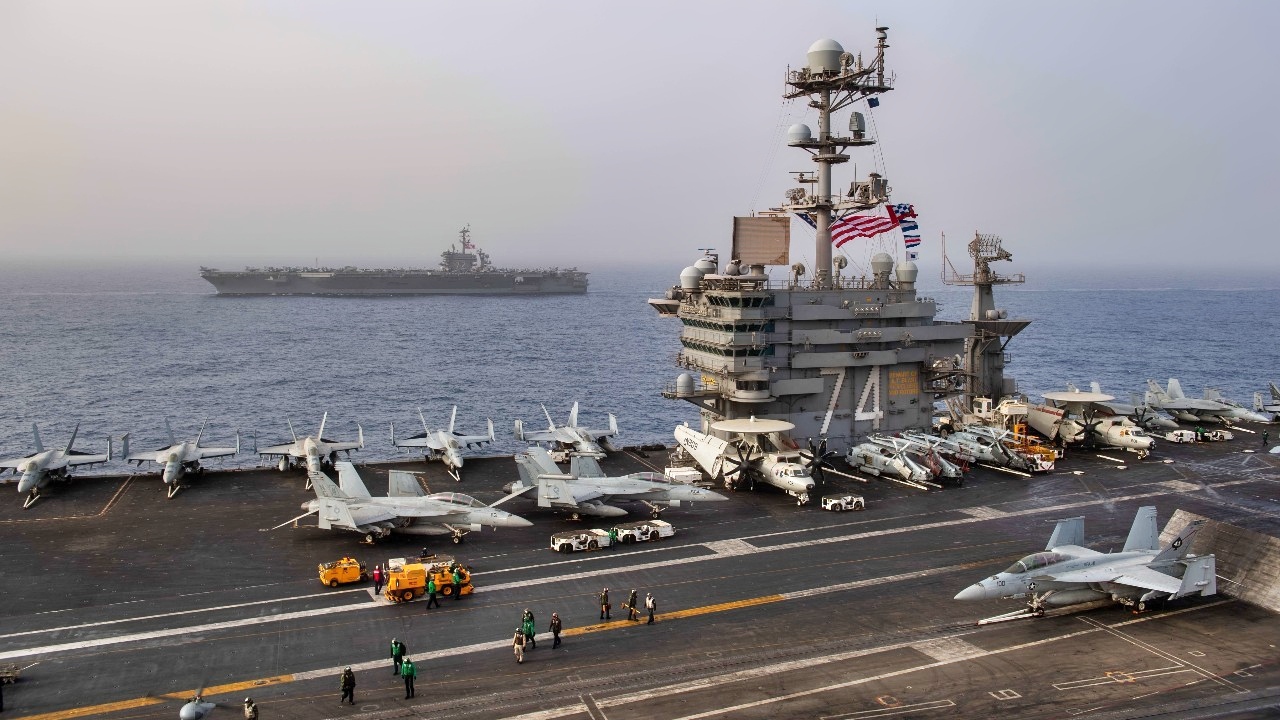
The aircraft carrier USS Abraham Lincoln (CVN 72), back, steams alongside the aircraft carrier USS John C. Stennis (CVN 74) in the Mediterranean Sea, April 24, 2019. The John C. Stennis Carrier Strike Group (CSG) 3 and Abraham Lincoln Carrier Strike Group (CSG) 12 are conducting dual carrier operations, providing opportunity for two strike groups to work together alongside key allies and partners in the U.S. 6th Fleet area of operations. John C. Stennis is underway in the Mediterranean Sea as part of the John C. Stennis Carrier Strike Group (JCSCSG) deployment in support of maritime security cooperation efforts in the U.S. 6th Fleet area of responsibility. (U.S. Navy photo by Mass Communication Specialist 3rd Class Grant G. Grady)
For example, pandemic-related workforce shortages were hard to anticipate, along with supply chain breakdowns.
However, more worryingly, delays were also fuelled by the discovery of turbine and component damage that was not expected.
Perhaps the most striking example of this problem is the USS George Washington (CVN-73). The carrier entered its RCOH in August 2017 and didn’t return to service until May 2023 – a total period of 2,117 days, or nearly six years.
To put that in perspective, it took almost the same amount of time to build the carrier in the 1980s as it did to refuel and modernize it.
The overhaul was extended by roughly two years beyond the original schedule due to COVID-19-related labor problems, parts shortages, and numerous extensive structural and systems repairs.
The George Washington refit even forced its crew to live aboard the ship for years while work dragged on – a situation that became so stressful that the Navy later investigated a series of suicides connected to morale collapse during the same period.

(Feb. 25, 2019) The aircraft carrier USS John C. Stennis (CVN 74) transits the South China Sea at sunset, Feb. 25, 2019. The John C. Stennis Carrier Strike Group is deployed to the U.S. 7th Fleet area of operations in support of security and stability in the Indo-Pacific region. (U.S. Navy photo by Mass Communication Specialist 1st Class Ryan D. McLearnon/Released)
While the damage can be repaired and the overhauls eventually completed, the multi-year gaps created by these delays threaten force posture and pose serious problems for the U.S. Navy.
With Stennis still undergoing refurbishment, the rest of the carrier force must absorb extra deployments and may face their own delays to necessary maintenance and repairs.
The delay in maintenance for the Stennis will have a knock-on effect for the rest of the CVN fleet, risking America’s ability to defend itself or launch necessary attacks in the meantime.
Ford-Class Isn’t the Answer (Yet)
The Navy has pinned its hopes on the Ford-class, a new generation designed to overcome the constraints of the aging Nimitz fleet. But even that program is faltering.
USS John F. Kennedy (CVN-79), the second Ford-class to be built, was supposed to arrive in mid-2025. Its delivery has now been pushed back to March 2027.
The next in line, Enterprise (CVN-80), has also slipped – its completion is now projected in 2030 due to supply chain and materials troubles.
And the delay isn’t entirely surprising; the Ford class is equipped with numerous new technologies, including its electromagnetic aircraft launch system (EMALS) and advanced weapons elevators, as well as new arresting gear and enhanced power distribution systems.
Many of these new systems have yet to reach reliable performance thresholds, and integrating them all at once has created cascading delays.
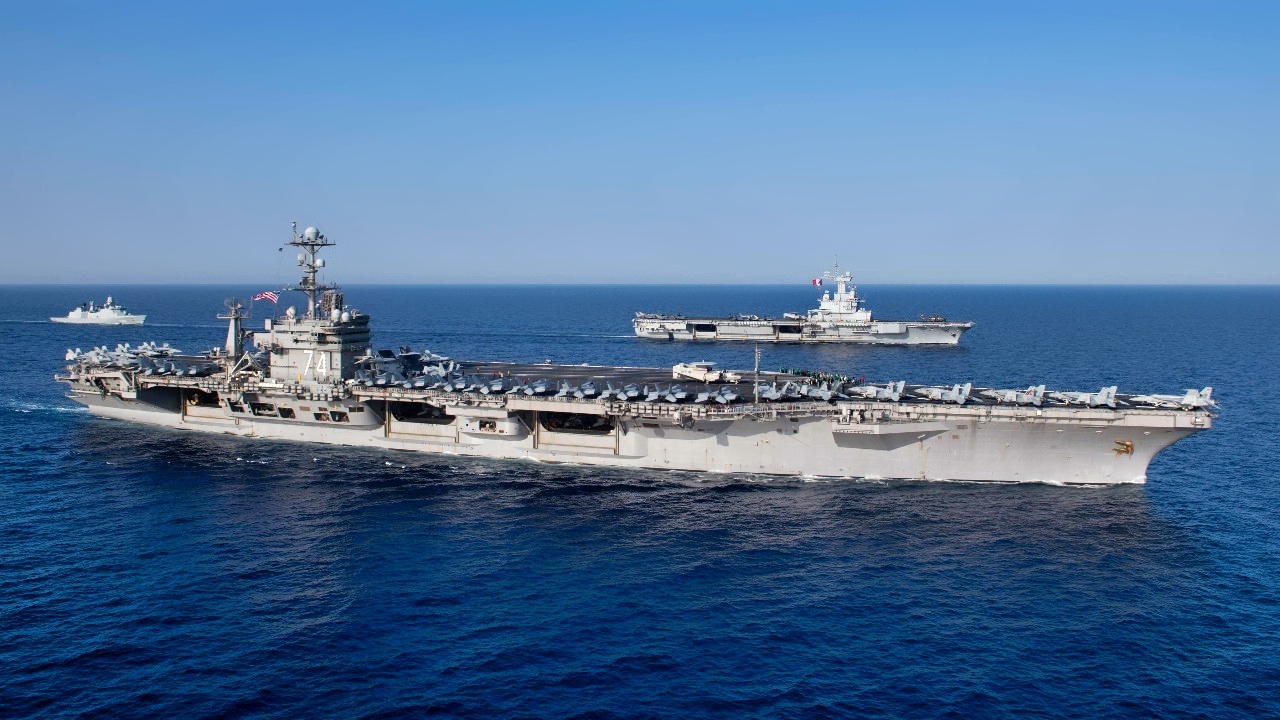
The French Marine Nationale aircraft carrier FS Charles De Gaulle (R91), and the aircraft carrier USS John C. Stennis (CVN 74) are underway in formation in the Red Sea, April 15, 2019. The John C. Stennis Carrier Strike Group is deployed to the U.S. 5th Fleet area of operations in support of naval operations to ensure maritime stability and security in the Central Region, connecting the Mediterranean and the Pacific through the western Indian Ocean and three strategic choke points. (U.S. Navy photo by Mass Communication Specialist Seaman Joshua L. Leonard)

PHILIPPINE SEA(Feb. 22, 2016) USS John C. Stennis (CVN 74) sails through the Philippine Sea. Providing a ready force supporting security and stability in the Indo-Asia-Pacific region, Stennis is operating as part of the Great Green Fleet on a regularly scheduled 7th Fleet deployment. (U.S. Navy photo by Mass Communication Specialist Seaman Cole C. Pielop/Released) .
With the increasing use of unmanned aerial vehicles (UAVs), the prospect of unmanned fighter jets and bombers, and the emergence of modern long-range anti-ship missiles, even the Ford class has questions to answer about its future.
The U.S. Navy must determine not only the best way to ensure maintenance runs more smoothly, but also how to remain relevant in modern sea warfare.
Growing Fleet Sizes and Strategic Changes
Ultimately, the only way to offset these lengthy maintenance cycles is through a combination of scale and efficiency.
A larger carrier fleet would allow the Navy to rotate ships through repair and deployment without leaving gaps in global coverage.
But that requires revitalizing America’s shipbuilding and maintenance infrastructure, which has suffered from decades of underinvestment and skilled labor shortages.
The problem is well-recognized inside (and outside) the Pentagon, with bottlenecks in shipyards and supply chains turning even minor setbacks into multi-year delays.
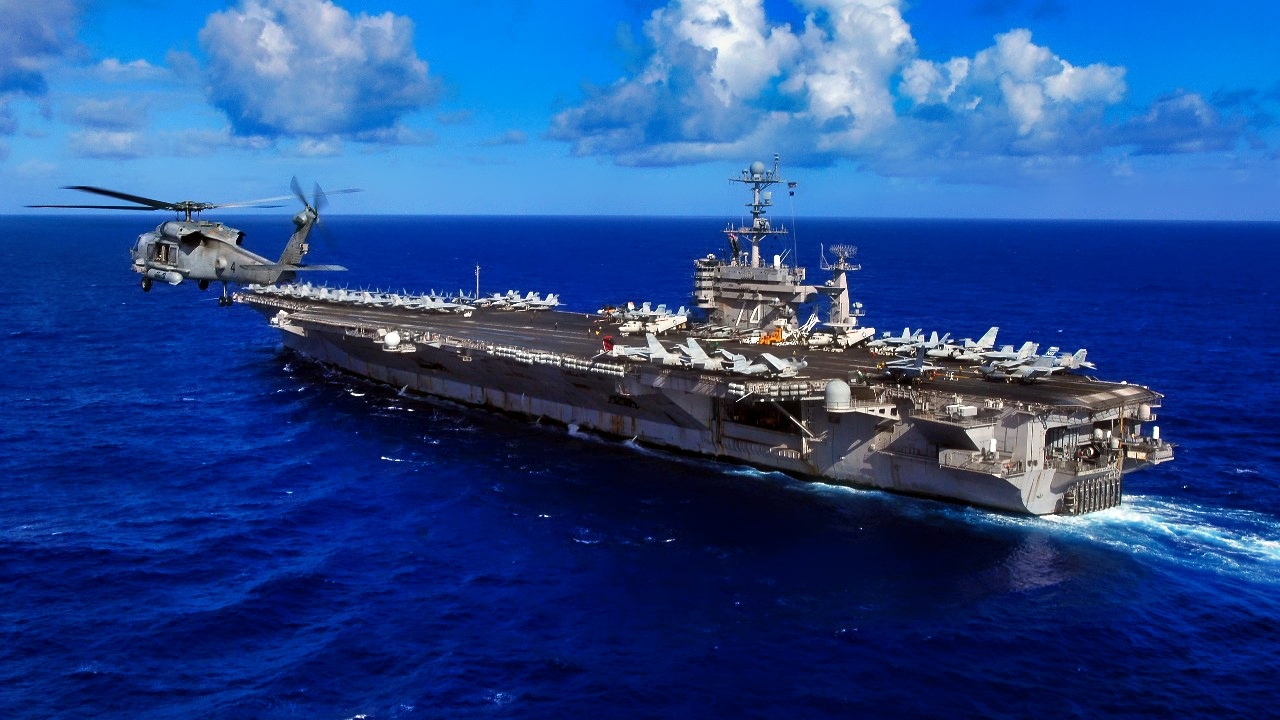
An HH-60H Seahawk, from the “Eightballers” of Helicopter Anti-Submarine Squadron (HS) 8, flies past Nimitz-class aircraft carrier USS John C. Stennis (CVN 74) during flight operations. Stennis is on a scheduled deployment to promote peace, regional cooperation and stability.
At the same time, the Navy must adapt its operational doctrine to better defend its carriers against the rapidly expanding drone and missile threat.
This involves integrating new counter-UAV systems, defense systems, and more distributed escort formations, designed to keep enemy sensors and weapons at bay, among other measures.
Without a stronger industrial base and a new, forward-looking defensive strategy, even the world’s most powerful navy risks seeing its flagship assets become huge liabilities.
About the Author:
Jack Buckby is a British author, counter-extremism researcher, and journalist based in New York who writes frequently for National Security Journal. Reporting on the U.K., Europe, and the U.S., he works to analyze and understand left-wing and right-wing radicalization, and reports on Western governments’ approaches to the pressing issues of today. His books and research papers explore these themes and propose pragmatic solutions to our increasingly polarized society. His latest book is The Truth Teller: RFK Jr. and the Case for a Post-Partisan Presidency.
More Military
Merkava: The Best Tank on Earth (Not Made in USA)
The U.S. Air Force’s Big B-21 Raider Stealth Bomber Mistake Still Stings
The U.S. Navy’s Big Ford-Class Aircraft Carrier Mistake Still Stings
Russia’s Admiral Kuznetsov Aircraft Carrier Can’t Stop Pumping Out Toxic Black Smoke
India’s Big Blunder Purchase of Russia’s ‘Mothball’ Aircraft Carrier Still Stings


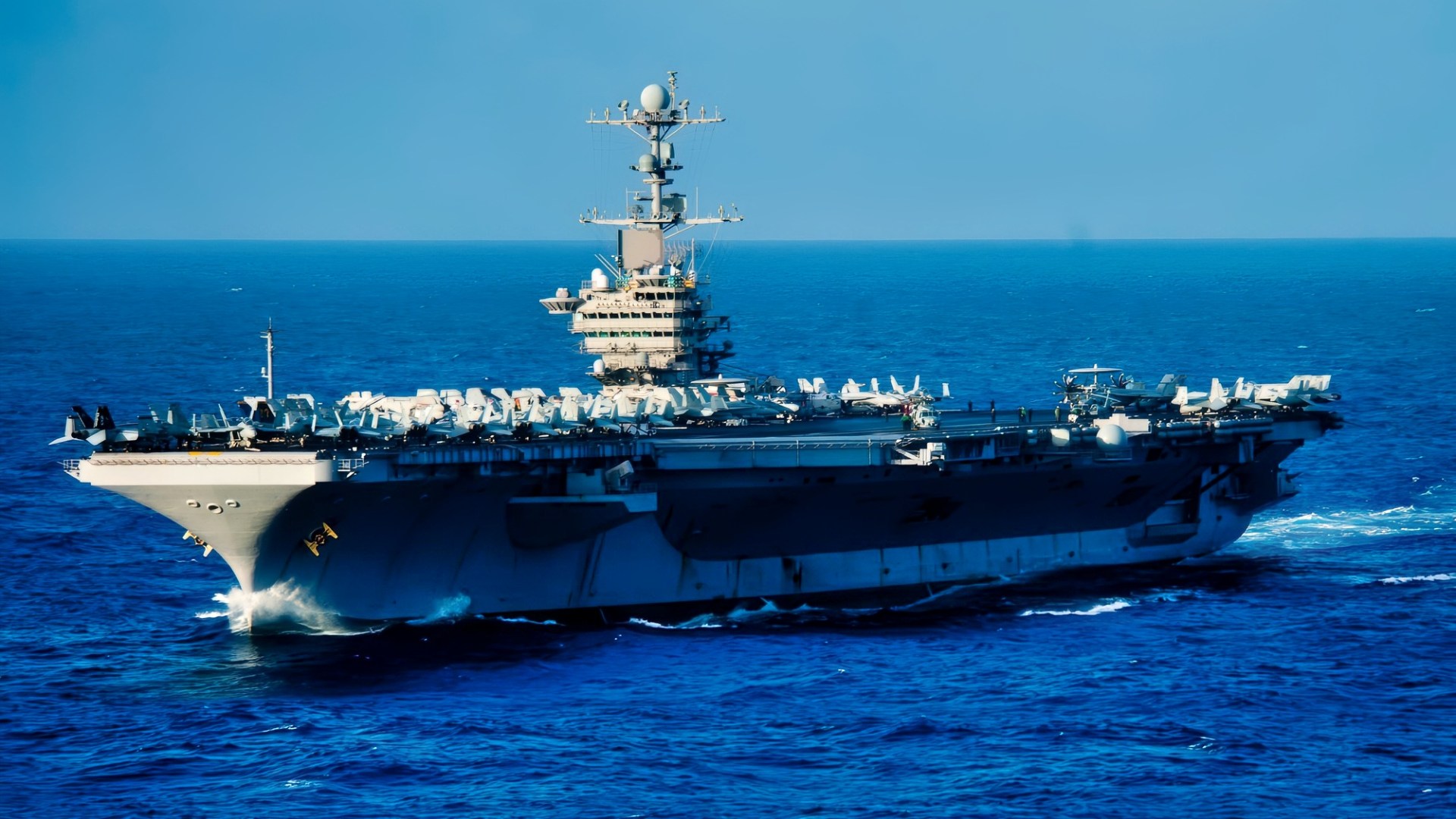








Joseph K
October 11, 2025 at 11:51 am
US is a third world country built on a house of cards.
Bill S
October 11, 2025 at 4:57 pm
Nimitz inactivation should be delayed so assets can be used to finish refueling.
Krystal cane
October 11, 2025 at 5:03 pm
Just throw some paint on it like you did the Truman after It had the collision. This is what happens when you hire a drunk from Faux news and they want to reactivate WW2 battleships 🤣. Release the Epstein files
Frederic Dudley
October 11, 2025 at 7:42 pm
This is a poorly written article. It is written in the wrong tense. The vessel in question is 14 months from completion not 5 years. The headline states the Stennis “Out Action” (sic). It should say “out of action”. Additionally, the Stennis went into the shipyard in 2021 for a 4 year RCOH.
Instead of saying the vessel will be out of service for more than 5 years, it should indicate the vessel has already been out of service (OOS) for four years or will have been OOS for more than 5 years by completion of the RCOH.
James T Couch
October 12, 2025 at 1:14 pm
Crystal, you need to look at what the democrats have done to our military. Everytime they are in charge, they defund the military. Bidens handling of the pandemic is a major reason for the mess this country is in. Our SOD is making our military great again. I suppose you think their is a place for DEI in our services. 🤪🤡